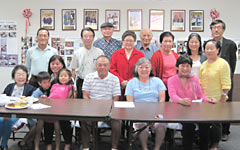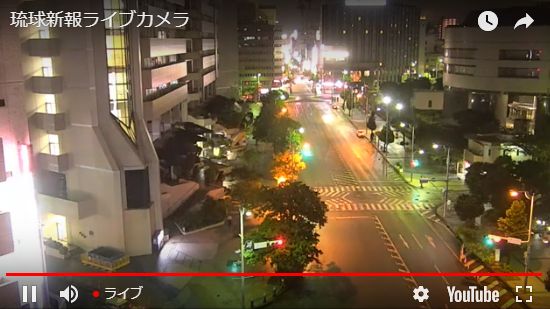North America Kenjinkai looks into reasons for migration

Staff of the History Committee and members were interviewed at the Hokubei Okinawa Kenjinkai Hall in California.
August 27, 2012 Sadao Tome Correspondent of Ryukyu Shimpo
The History Committee of Okinawa Association of America, Hokubei Okinawa Kenjinkai, has interviewed five members from Hawaii and four from Central and South America to find out why they migrated to the United States. The United States has been called “the salad bowl of the world,” because its people came from many different countries around the world, and so have a diverse range of ethnic backgrounds. The Kenjikai members each have their own personal histories and reasons for migrating to the U.S. from Hawaii and Central and South America.
During 1950s and 1960s, when the economy fell into recession in Hawaii, many Uchinanchu moved from there to South California. However only a small number of them joined the Kenjinkai.
There are some successful third-generation Okinawan such as Jon Shirota, Masao Yamashiro, and John Nakamatsu whose grandfathers are from Okinawa and parents from Hawaii. Jon Shirota became a renowned playwright for writing Leilani’s Hibiscus. Columnist Masao Yamashiro published books such as Kibei Nisei and Toi Taigan. Jon Nakamatsu won the first place in the 10th Van Cliburn International Piano Competition in 1997.
All of them currently live in California. The late Charly Kamiya and his son Ken Kamiya served as president of the Kenjinkai. Ken’s daughter, Helene Shimane has contributed to the Kenjinkai in various fields. They also moved from Hawaii.
Migrants from South America also have a tragic side in their histories. During World War II, more than 2300 Japanese in Central and South America were forcibly relocated to the U.S. and placed in internment camps on suspicion of espionage. Eighty percent of the detained people were Japanese and 50 percent of those Japanese were Okinawan.
In 1998, almost ten years after the U.S. government paid compensation to former internees, the prisoners from Central and South America received an apology and compensation from President Bill Clinton. The efforts of Robin Toma, an attorney whose father is from Okinawa, led to the issue being resolved. He represented the plaintiffs, including Carmen Mochizuki and Henry Shima. Carmen Mochizuki is a second-generation Nago Okinawan from Peru. Henry Shima is also from Peru and a second-generation Haneji Okinawan. Toma’s father is from Okinawa and his mother from Gifu Prefecture. He is an attorney and specializes in human rights protection.
Nine members gathered for the interview. They are all second-generation Japanese from Hawaii and South America such as Argentine, Bolivia, Brazil, and Peru, and understand a little Japanese. Most of them went to South California in search of a better life. By joining the Kenjinkai, they found a home as Shimanchu.
(English translation by T&CT, Megumi Chibana and Mark Ealey)
Previous Article:Odac boosts sales of Okinawan mushrooms to Taiwan
Next Article:Family Olympic Games held on Ojima
[Similar Articles]
- North America Kin Chojinkai Club celebrates 90th anniversary
- Governor Onaga to attend 110th immigration anniversary ceremony in Peru
- Three young people from South America eager to learn about Okinawan culture
- Okinawan Peruvian begins sales of Peruvian liquor Pisco
- New head for Japanese Association of Southern California
 Webcam(Kokusai Street)
Webcam(Kokusai Street)


